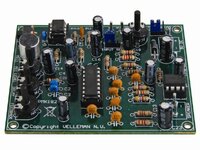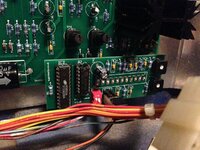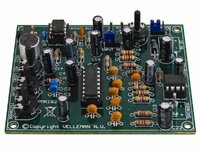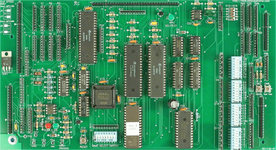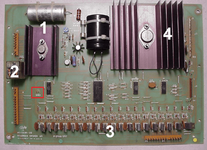For CENTAUR II the underplayfield fuse is a 1 Amp 3AG Slow-Blow. 3AG is a US size equating to 1 1/4" length (32mm) and 1/4" diameter (6.35mm). You can get these from Maplin, code GL91Y, £3.49 for pack of ten:
https://www.maplin.co.uk/p/1a-time-delay-glass-31mm-fuse-10-pack-gl91y
If this fuse blows every time you switch the game on (or very soon after starting play) then you've most likely got a fault/short on the playfield, commonly a dead coil or coil diode, or a loose wire shorting out. Sometimes even a cable caught/crushed by moving the playfield up and down.
Again, from
http://techniek.flipperwinkel.nl/ballyss/rep/index3.htm#driver:
The Over-Looked Under-Playfield Solenoid Fuse.
Often your Bally game will boot fine and start a game. The flippers work, but no other solenoids on the playfield work. This can often be caused by a blown under-the-playfield solenoid fuse.
If you run the solenoid diagnostic test and the coin lock-out coils, the flipper relay, and the knocker all work, and nothing else works, a dead under the playfield fuse could be the problem. Since the game boots OK, we know the +43 volt fuse on the rectifier board is OK (if this fuse was blown the MPU board won't "flash" the seventh time).
The under the playfield solenoid fuse is usually located on the right hand side by the flippers. Usually it's a 1 amp slo-blo fuse. If this fuse keeps blowing, you have a solenoid problem on the playfield somewhere. This can be caused by a shorted coil, a bad coil diode, or a broken (and shorted) coil wire. A shorted and locked on driver transistor is probably NOT your problem.
If the playfield fuse keeps blowing, there is another procedure you can try to isolate the problem as a last resort. Turn the game off and disconnect the "pull down" wire from EVERY coil under the playfield. The pull down wire is the single wire on each coil, and connects to the NON-banded side of the coil's diode (the power side connects to the banded side of the diode's coil lug). Then power the game on (the fuse should not blow!). Now re-connect each wire to its respective coil. When the fuse blows, you've found your problem coil/diode.



